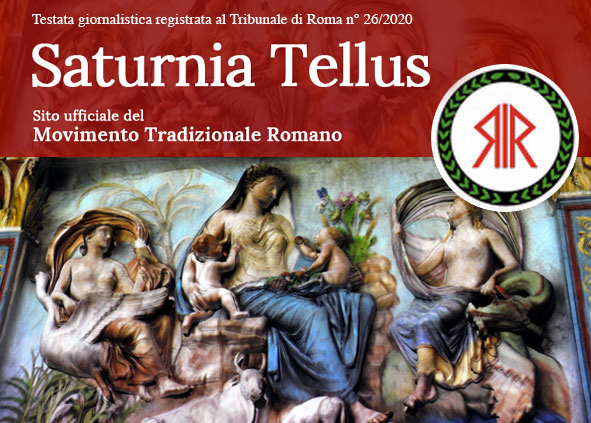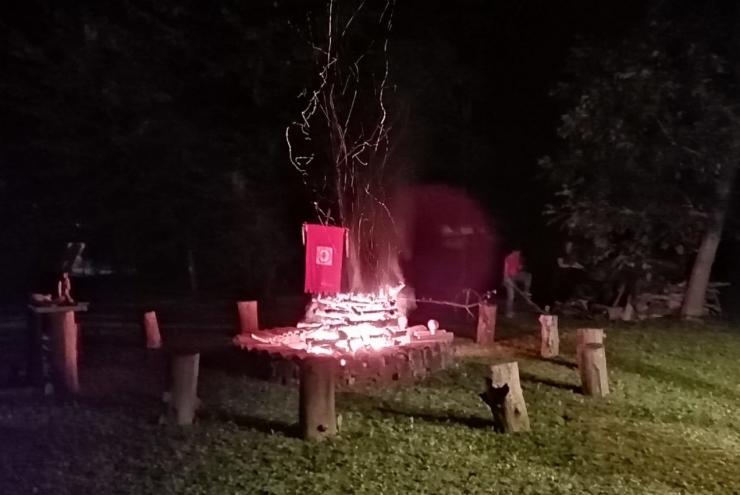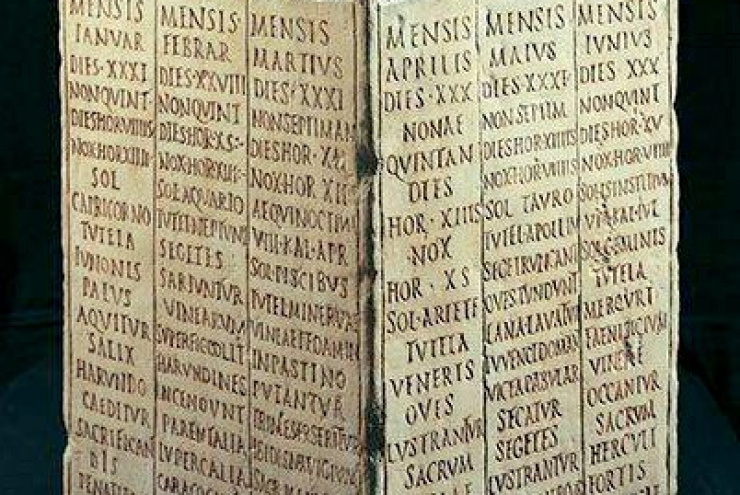The Metamorphoses by Ovid. I, 20-75: The formation of the cosmos
I, 21-75 “The formation of the cosmos”
21. Hanc deus et melior lītem nātūra dirēmit;
nam caelō terrās et terrīs abscidit undās
et liquidum spissō secrēvit ab āere caelum;
quae postquam ēvolvit caecōque exēmit acervō,
25. dissociāta locis concordi pāce ligāvit.
Īgnea convexī vīs et sine pondere caelī
ēmicuit summāque locum sibi fēcit in arce;
proximus est āēr illī levitāte locōque,
densior hīs tellūs elementaque grandia traxit
30. et pressa est gravitāte suā; circumfluus ūmor
ultima possedit solidumque coercuit orbem.
Sīc ubi dispositam, quisquis fuit ille deōrum
congeriem secuit sectamque in membra redēgit,
principiō terram, nē nōn aequālis ab omnī
35. parte foret, magnī speciem glomerāvit in orbis;
tum freta diffūdit rapidīsque tumescere ventīs
iussit et ambītae circumdare litora terrae.
Addidit et fontēs et stagna immensa lacūsque
flūminaque obliquīs cinxit dēclīvia rīpīs,
40. quae dīversa locīs partim sorbentur ab ipsā,
in mare perveniunt partim campōque recēpta
līberiōris aquae prō rīpīs lītora pulsant.
Iussit et extendī campōs subsīdere vallēs,
fronde tegī silvās, lapidōsōs surgere montēs;
45. atque duae dextrā caelum totidemque sinistrā
parte secant zonae, quinta est ardentior illīs,
sīc onus inclusum numerō distinxit eōdem
cūra deī, totidemque plagae tellūre premuntur.
Quārum quae media est, nōn est habitābilis aestū;
50. nix tegit alta duās: totidem inter utrumque locāvit
temperiemque dedit mixtā cum frīgore flammā.
Inminet hīs āēr, quī quantō est pondere terrae,
pondere aquae levior, tantō est onerōsior īgnī.
Illīc et nebulās, illīc consistere nūbēs
55. iussit et hūmānās mōtūra tonitrua mentēs
et cum fulminibus facientēs fulgora ventōs.
Hīs quoque non passim mundī fabricātor habendum
āera permisit; vix nunc obsistitur īllis,
cum sua quisque regant dīversō flāmina tractū,
60. quīn lanient mundum: tanta est discordia frātrum.
Eurus ad Aurōram Nabataeaque regna recessit
Persidaque et radiīs iuga subdita mātūtīnis;
vesper et occiduō quae lītora sōle tepescunt
proxima sunt Zephyrō; Schytiam Septemque triōnēs
65. horrifer invāsit Boreās; contrāria tellūs
nūbibus adsiduīs pluviāque madescit ab Austrō.
Haec super inposuit liquidum et gravitāte carentem
aethera nec quicquam terrēnae faecis habentem.
Vix ita līmitibus dissaepserat omnia certīs,
70. cum, quae pressa diū fuerant calīgine caeca,
sīdera coepērunt tōtō effervescere caelō;
nēu regiō foret ulla suīs animālibus orba,
astra tenent caeleste solum formaeque deōrum,
cessērunt nitidīs habitandae piscibus undae,
75. terra ferās cēpit, volucrēs agitābilis āēr.
Translation
A god, a better nature, resolved this state of contrast (ie the chaotic condition described in the previous verses); in fact he separated the earth from the sky and the waves from the earth and divided the sky from the heavy air; after having unfolded and released everything from the dark confused mass, he put into place in a harmonious peace all that was previously dissociated. The weightless strength of fire emanated from the arched sky and made its place on the summit of the celestial vault; next to this by weight and by place there is air; the earth, denser than these, dragged the great elements and was compressed by its own gravity; the liquid that flows around has the last place and surrounds the solid world.
When the god, whoever he was among the gods, divided the mass thus rearranged, reducing it into separate parts, he first shaped the earth in the form of a large globe, so that it would be the same on all sides; then he spread the waves and ordered them to swell with the impetuous winds and to the coasts to surround the so bounded lands. He added springs, immense ponds, lakes, and surrounded the rivers that descend between sinuous banks. The rivers, depending on the places, are partly absorbed by the same land, and partly reach the sea and, received by the open water, they hit the coast instead of the banks. He ordered the plains to extend and the valleys to lower themselves, the woods to cover themselves with leaves and the rocky mountains to rise; and as two parts divide the sky to the right and as many to the left, and a fifth part which is more resplendent, so for the care of the god the mass enclosed by the sky is distinguished by the same number of areas extending over the earth. The area in between is not habitable due to the heat; the high snow covers two: between these two disposed the same number of zones and assigned them to the temperate climate thanks to the heat mixed with the cold. On the areas above, the air, which is as much lighter than the weight of the earth and water, as much is heavier than the fire. He ordered the mists to live there, and there the clouds and thunder that would frighten the human minds and winds that generate lightning and thunderbolts. The maker of the world did not grant to the winds the unlimited domination of the air; yet still today it is hardly achieved that they do not destroy the world, since everyone holds his breezes in a different direction: so great is the fraternal discord. Euro went to the dawn and the Nabataean and Persian kingdoms and the mountain ranges exposed to the morning rays, while Vespers and the coasts that are warmed by the sun to the west are near the Zephyr; the icy Borea seized the Scythia and the north; the opposite land is drenched in the Austre constantly with clouds and rain. Above these winds, he imposed the ether, clear and weightless and without any earthly characteristic.
As soon as he had separated everything with fixed boundaries, the stars, which had long been dimmed in the dark fog, began to shine all over the sky; and there was no region without its living beings, the stars and the forms of the gods guarded the celestial soil, the waves were to be inhabited by glittering fish, the earth hosted wild beasts, the light air the birds.
Comment
How was the wonderful world around us formed from the initial Chaos?
In this section, the ordering function of divinity in the cosmos unfolds in all its power. We can identify three moments: the separation of the elements (verses 21-31), the formation of the world (verses 32-68) and the completion of the work (verses 69-75).
THE SEPARATION OF ELEMENTS
The first intervention by a god occurs over the unformed dark mass of chaos. The poet does not feel the need to identify the god, but focuses on how the formation process took place. Chaos alone cannot generate anything, and this is the reason why the poet cites “a better nature” (melior nātūra) than Chaos, alluding to the power of an entity that has the ability to order and transfer forms to matter. The adjective “better” refers to the hierarchical vision in accordance with Neoplatonism, where the bodies with more power order those with less power. Divinity acts by separating the different forms from the chaotic mass. A separation that is not only physical, but – being of a better nature – is also mental, or discernment. Mentally we can discern two different objects when we recognize two different forms in them. The discernment of divinity, unlike ours, is active, because it happens by applying different forms to the shapeless mass, thus actively defining the perceivable world. In a certain way, the very act of thinking by divinity is creative and formative. Divinity separates the four elements by placing them in harmony with the initial contrast (dissociāta locis concordi pāce ligāvit). The first separation is between earth, sky, and sea, then the sky itself is divided into two: in the upper part we find what we perceive as the celestial, blue and terse vault; in the lower part the clouds and the denser phenomena of the lower atmosphere. In short, the first three elements are deployed: air, earth, and water. From these, the lighter element of our world is freed upwards, the fire, which is not by chance used to burn off offers and sacrifices for its perennial upward motion. The four elements of Empedocles are therefore the first to separate, as fundamental building blocks of the cosmos. The attention is then brought downwards, from the fire to the air, then to the earth, which is compressed by gravity with an almost modern image, to end with the water that surrounds everything with its embrace, taking up the theme of the Amphitrite but this time more scientifically, in harmony with the style of the section (circumfluus ūmor).
THE FORMATION OF THE WORLD
Once the elements have been separated, the divinity commands (iussit, used three times in this section) the shape of the world. The earth is shaped like a globe, (terram magnī speciem glomerāvit in orbis) and divinity shapes valleys and mountain ranges. The description is lively and offers images worthy of a scientific documentary making the mind literally fly over the images of the seas, the rivers with their sinuous paths to the sea, the mountains that rise and the valleys that are lowered. The author also describes the four winds of the Homeric tradition, adopting the Latin name for the wind of the south: Borea to the north, Euro to the east, Austro to the south (Noto by the Greeks) and Zephyr to the west. To cover all this marvelous symphony, the ether, the fifth element introduced by Aristotle, an element so pure that it could not be mixed with the others and therefore destined to remain outside our world, out there somewhere.
THE COMPLETION OF THE WORK
The formation of the world began with highly dramatic and alien tones from the chaos towards the separation of the elements, gradually transforming into a wild landscape and ending with the stars shining in the dark night (sīdera coepērunt tōtō effervescere caelō), an image that eventually gives a reassuring peace to the reader. Perhaps this verse was inspired by Dante Alighieri, when at the exit of Hell he wrote: “and thence we came forth to see again the stars”. The divine order has been established, every area of the world is inhabited by its living beings. It is wonderful to note that a place is attributed to the Gods as well as to every other animal being: the Gods dwell in the same world as us in the sky, just as fish, birds and wild beasts find their place in their respective places. A universe presided over by the divinity, keeper of the cosmic order.
So the world had been shaped, perfect in its geography and its laws, ready to welcome human beings, but we will tell this story in the next article.
Mario Basile
















